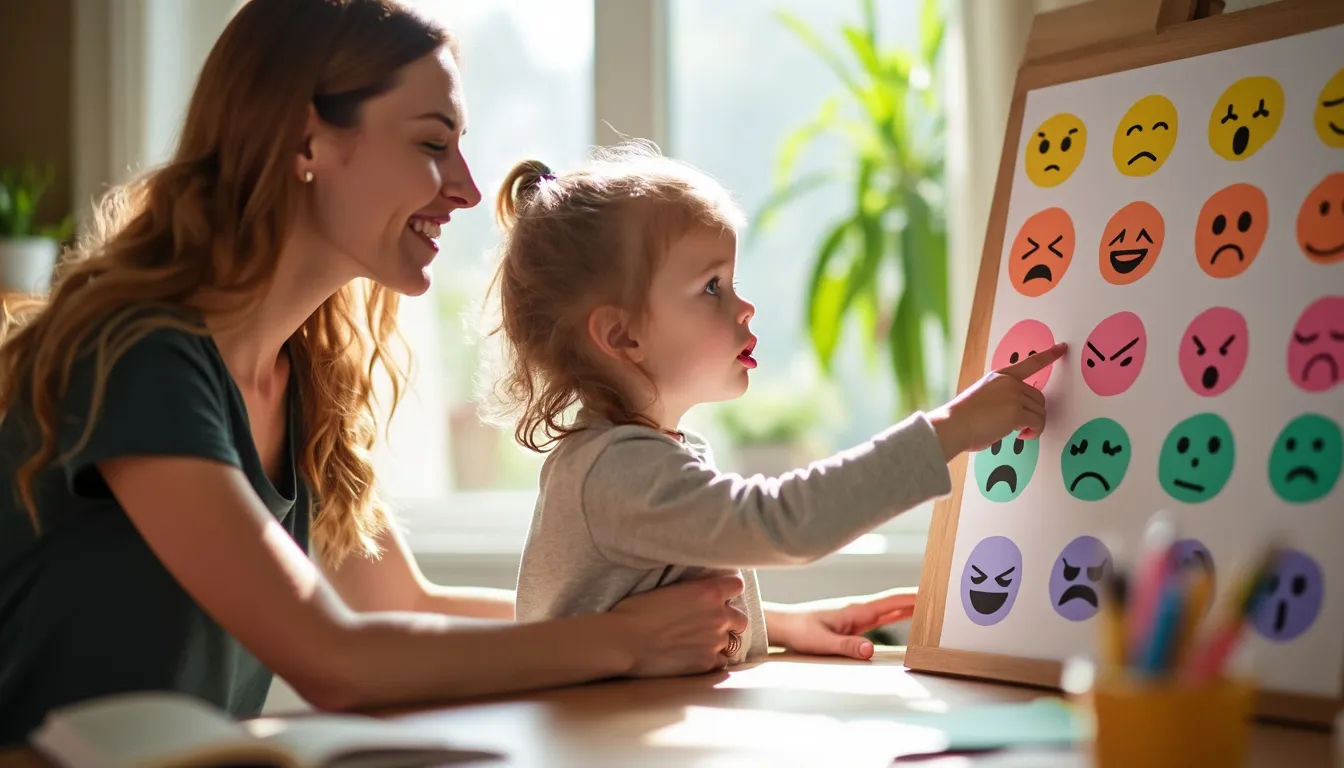When Anger Surfaces: Understanding Anger in ADHD Children

Anger is a powerful emotion that can be challenging for any child to manage. For children with ADHD, it often manifests more intensely and more frequently, catching parents and caregivers off guard. This heightened emotional response is not a reflection of bad behavior or poor parenting but a hallmark of ADHD’s impact on emotional regulation.
Understanding how ADHD affects anger—and equipping yourself with strategies to respond constructively—can transform these moments from volatile to teachable. This journal delves into the unique ways anger presents in children with ADHD and provides actionable advice for helping your child express their feelings in healthier ways.
How ADHD Affects Emotional Regulation

Children with ADHD often struggle with emotional regulation, the ability to manage and respond to emotions in a measured way. The same neurological differences that contribute to inattention, impulsivity, and hyperactivity also make it harder for children to process and cope with intense feelings.
Why ADHD Amplifies Anger
-
Low Frustration Tolerance: ADHD children have a lower threshold for frustration. When tasks or situations don’t go as expected, anger can erupt as a way to release pent-up emotions.
-
Difficulty Transitioning: Sudden changes or transitions can overwhelm an ADHD child, leading to quick tempers.
-
Hyperfocus and Interruptions: Children with ADHD often experience hyperfocus, an intense concentration on activities they enjoy. When interrupted, they may react with anger, feeling as though their focus has been shattered unfairly.
- Neurological Basis: The prefrontal cortex, which governs impulse control and emotional regulation, develops more slowly in children with ADHD. This delay means they may act out their anger before considering alternatives.
Recognizing Triggers and Patterns of Anger in ADHD Children
Recognizing the signs of anger in children with ADHD is essential for addressing the behavior proactively. While all children exhibit anger from time to time, ADHD-related anger often follows specific patterns and can escalate quickly.
Common Signs of Anger in ADHD Children
-
Yelling or Screaming: Raised voices and verbal outbursts are common expressions of anger.
-
Aggressive Behaviors: Hitting, throwing objects, or slamming doors can accompany emotional outbursts.
-
Disproportionate Reactions: Seemingly minor frustrations, like losing a game or not getting a favorite snack, may provoke intense anger.
- Emotional Shutdown: Some children respond to anger by retreating or refusing to communicate, bottling up their feelings instead of expressing them.
Effective Strategies to Address Anger in ADHD Children

Dealing with anger constructively requires a calm, consistent approach. While it’s natural to feel frustrated or overwhelmed when your child is upset, your response can significantly influence how the situation unfolds.
1. Stay Calm and Regulate Your Emotions
Children often mirror the emotional tone of the adults around them. If you remain calm, you can de-escalate the situation and model effective emotional regulation.
-
Pause Before Responding: Take a deep breath before reacting. A calm response helps diffuse tension.
-
Validate Their Feelings: Saying, “I can see you’re really upset right now,” shows empathy without condoning negative behavior.
2. Identify and Address Triggers
Understanding what triggers your child’s anger can help you prevent future outbursts. Common triggers include:
-
Unmet expectations or perceived unfairness.
-
Overstimulation from noisy or chaotic environments.
-
Hunger, fatigue, or other physical discomforts.
3. Set Clear Boundaries
While it’s important to be understanding, it’s equally essential to set limits on unacceptable behavior.
-
Use Firm but Kind Language: Say, “I understand you’re upset, but throwing toys is not okay. Let’s find another way to show how you feel.”
-
Consistent Consequences: Follow through with consequences for aggressive behaviors, like a time-out or loss of a privilege.
4. Offer Choices and Empower Them
Giving your child some control over the situation can help reduce anger.
-
Ask, “Would you like to take a break or talk about what’s bothering you?”
-
Provide tools like stress balls or a quiet corner for self-regulation.
5. Teach Healthy Coping Skills
Over time, teach your child ways to manage anger constructively.
-
Encourage them to name their feelings using phrases like, “I feel mad because...”
-
Practice calming techniques together, such as deep breathing, counting to ten, or using visualization exercises.
Building Emotional Regulation Skills in ADHD Children

Building emotional regulation skills takes time and practice. With patience and consistency, you can help your child learn to navigate their anger in healthier ways.
1. Teach Emotional Awareness
Help your child identify and name their emotions.
-
Use tools like mood charts or flashcards with different emotions.
-
Encourage them to reflect on what triggered their anger after they’ve calmed down.
2. Encourage Problem-Solving
Guide your child in finding solutions to situations that upset them.
-
Role-play challenging scenarios and brainstorm ways to handle them differently.
-
Celebrate their efforts to resolve conflicts constructively.
3. Model Healthy Anger Expression
Show your child how you handle frustration.
-
Share your thought process: “I feel angry because I spilled my coffee, but I’m going to take a deep breath and clean it up.”
-
Apologize if you react poorly, reinforcing the importance of accountability.
4. Create a Calm-Down Plan
Develop a personalized strategy for managing anger.
-
Include steps like identifying triggers, using calming tools, and seeking support.
-
Post the plan in a visible place as a reminder.
Conclusion: Turning Anger into Growth
Anger in ADHD children can feel overwhelming, but it’s also an opportunity to teach emotional resilience and strengthen your bond with your child. By understanding the neurological basis of ADHD, identifying anger triggers, and implementing constructive strategies, you can help your child navigate their emotions more effectively.
Progress takes time, and setbacks are natural. Celebrate small victories and don’t hesitate to seek support from professionals or other parents. Together, you can transform moments of anger into valuable lessons and help your child develop healthier ways to express their emotions.


